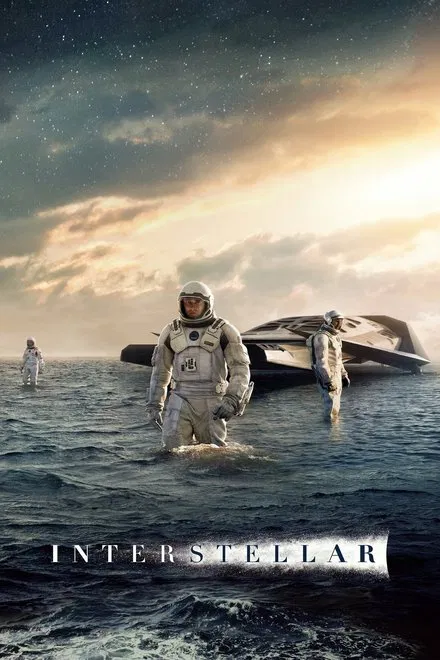
Directed by: Christopher Nolan
Starring: Matthew McConaughey, Anne Hathaway, Jessica Chastain, Michael Caine, Mackenzie Foy
🌌 Introduction: Human Longing Beyond the Stars
Interstellar (2014) is not merely a science fiction odyssey about traversing galaxies—it is a sweeping meditation on the bonds of love, the boundaries of knowledge, and humanity’s cosmic insignificance and resilience. Christopher Nolan’s film combines the grandeur of theoretical physics with the intimacy of family longing, weaving a tale that is as intellectually stimulating as it is emotionally stirring. It is a film that attempts to reconcile Einsteinian relativity with the mysterious, enduring forces that bind us across time and space.
🚀 The Science: Relativity, Wormholes, and Black Holes
Central to Interstellar is the scientific concept of time dilation—how gravity and velocity affect the passage of time. Nolan’s narrative is structured around these scientific ideas: Cooper (Matthew McConaughey) and his fellow astronauts travel through a wormhole near Saturn to seek habitable worlds. On Miller’s planet, time moves much slower due to its proximity to a supermassive black hole, Gargantua. This results in the heartbreaking realization that hours on the planet equal years back on Earth, straining the father-daughter bond between Cooper and Murph (Mackenzie Foy/Jessica Chastain).
The film’s depiction of wormholes and black holes was informed by physicist Kip Thorne, whose equations produced the most accurate (and visually stunning) cinematic black hole to date. The science is not just spectacle; it is the very architecture of the narrative, dictating the characters’ sacrifices and hopes.
⏳ Time, Memory, and the Power of Love
While the film dazzles with cosmic vistas and technical jargon, its emotional core is rooted in time and memory. The separation of Cooper and Murph serves as the emotional axis: every scientific discovery is haunted by the ache of lost years and the hope for reunion. The passage of time is both a physical phenomenon and an existential wound—the missed milestones, the messages left behind, the love that persists despite the abyss.
Murph’s journey mirrors her father’s, both propelled by a desire to save humanity and to find each other. Their bond transcends space and time, culminating in the film’s most metaphysical assertion: that love is a dimension, a force capable of bridging even the most impossible divides.
🔄 The Tesseract: Higher Dimensions and Destiny
The film’s climax inside the tesseract—a five-dimensional space within the black hole—transforms the narrative into a meditation on destiny and agency. Cooper’s desperate attempt to communicate with Murph through gravitational signals reveals that time is not a prison, but a landscape. He becomes the “ghost” of her childhood, sending the quantum data needed to save Earth, fulfilling a closed-loop of causality that feels both inevitable and miraculous.
The tesseract sequence literalizes the idea that the universe is not linear, that all moments exist simultaneously, and that the choices we make echo across the corridors of time. Nolan’s visualization of higher dimensions is not just speculative fiction; it is a poetic rendering of humanity’s quest to find meaning in an indifferent cosmos.
🌱 Hope, Sacrifice, and the Human Drive
In the end, Interstellar offers a vision of hope born of sacrifice. Cooper’s willingness to abandon his own future, Dr. Brand’s (Anne Hathaway) faith in love as a guiding principle, and Murph’s relentless pursuit of the truth are all expressions of humanity’s refusal to surrender. The film’s message is ultimately one of survival through connection—the future belongs not to the strongest, but to those who remember, love, and reach out beyond themselves.
🎯 Final Thoughts: A Cosmic Embrace
Interstellar is a film that refuses to separate the scientific from the spiritual, the rational from the emotional. Its twisty, time-bending structure mirrors the complexity of its themes, asking viewers to consider not only the vastness of the universe, but also the profound smallness and significance of every moment shared. By the time Cooper sets off to reunite with Brand among the stars, the film has expanded the definition of home to include not just a place, but a thread of love stretching across the cosmos.